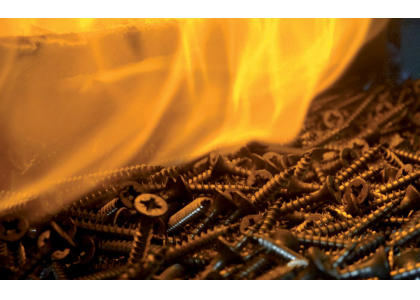
In the field of mechanical manufacturing, screws are a common fastener, widely used in a variety of mechanical equipment and structures. The performance of screws is directly related to the stability and safety of mechanical equipment. Heat treatment is one of the important processes to improve the performance of screws.
Heat treatment process
Annealing: This is the first step of heat treatment, the purpose is to eliminate the internal stress in the screw material, improve its plasticity. It is usually carried out in a protective atmosphere and the temperature is controlled within a certain range to homogenize the internal structure of the material.
Normalizing: Normalizing is a heat treatment process carried out at a higher temperature to improve the organizational structure of the material and increase hardness and strength. This step is usually done after annealing.
Quenching: Quenching is the process of heating the screw to a certain temperature and then cooling it quickly, in order to obtain martensitic structure, which significantly improves the hardness and strength of the screw.
Tempering: The hardness of the screw after quenching is too high and the toughness is not enough, so it needs to be tempered. Tempering is a heat treatment performed at a lower temperature, which can reduce the quenching stress and improve the toughness and plasticity of the screw.
Surface hardening treatment: For screws that bear high loads, surface hardening treatment may also be required, such as carburizing, nitriding, etc., to improve the wear resistance and fatigue resistance of the screw surface.
Performance improvement
Hardness increase: Through quenching and tempering, the hardness of the screw is significantly increased, which helps to improve its stability under high loads.
Strength enhancement: Normalizing and quenching during heat treatment can increase the tensile strength and yield strength of the screw, so that it can withstand greater loads.
Toughness improvement: Tempering treatment can reduce the brittleness caused by quenching, improve the toughness of the screw, so that it is not easy to break when it is affected by impact or vibration.
Improved wear resistance: Surface hardening treatment can significantly improve the wear resistance of the screw surface and extend its service life.
Enhanced corrosion resistance: Certain heat treatment processes, such as nitriding, can improve the corrosion resistance of screws, so that they can maintain performance in harsh environments.
Dimensional stability: Heat treatment can reduce the heat treatment deformation of screws, improve their dimensional stability, and ensure the assembly accuracy.